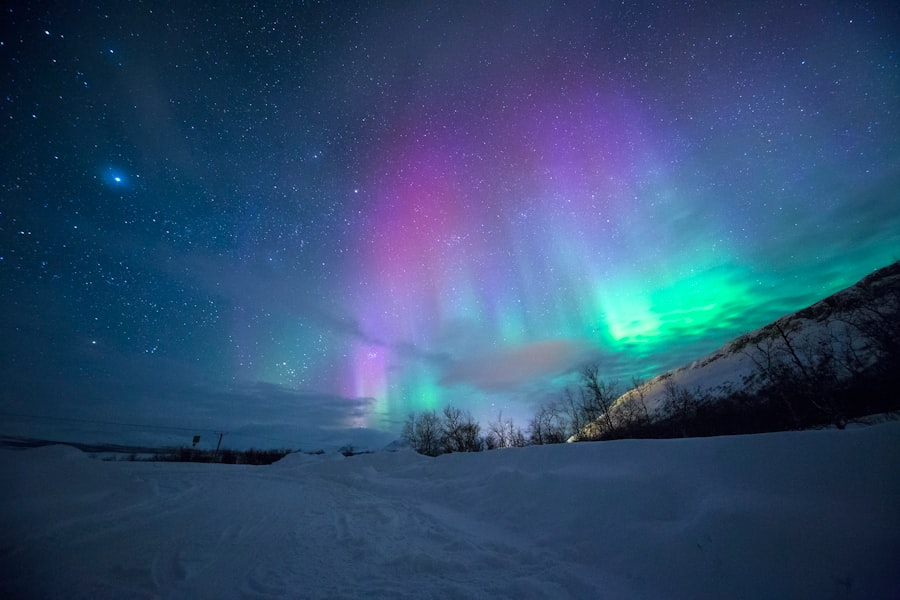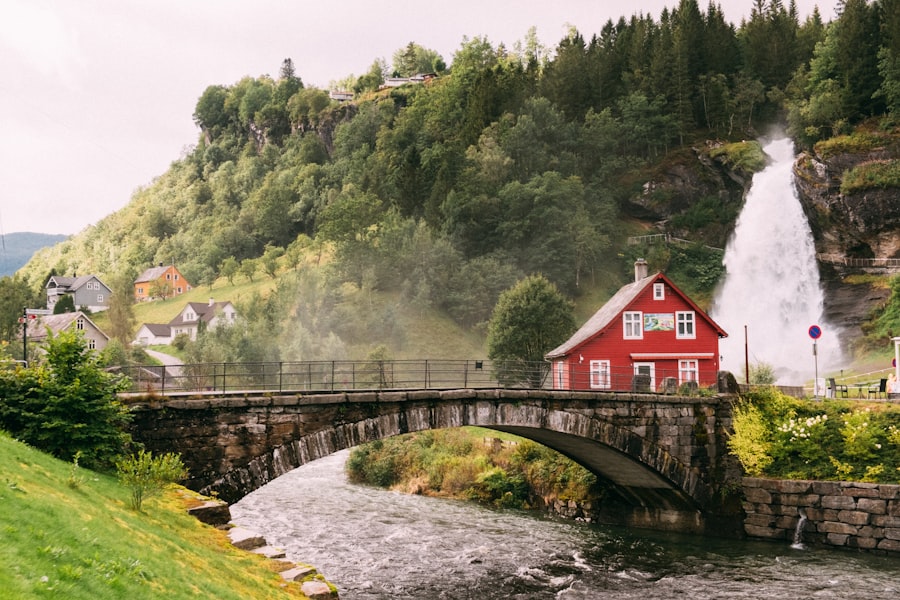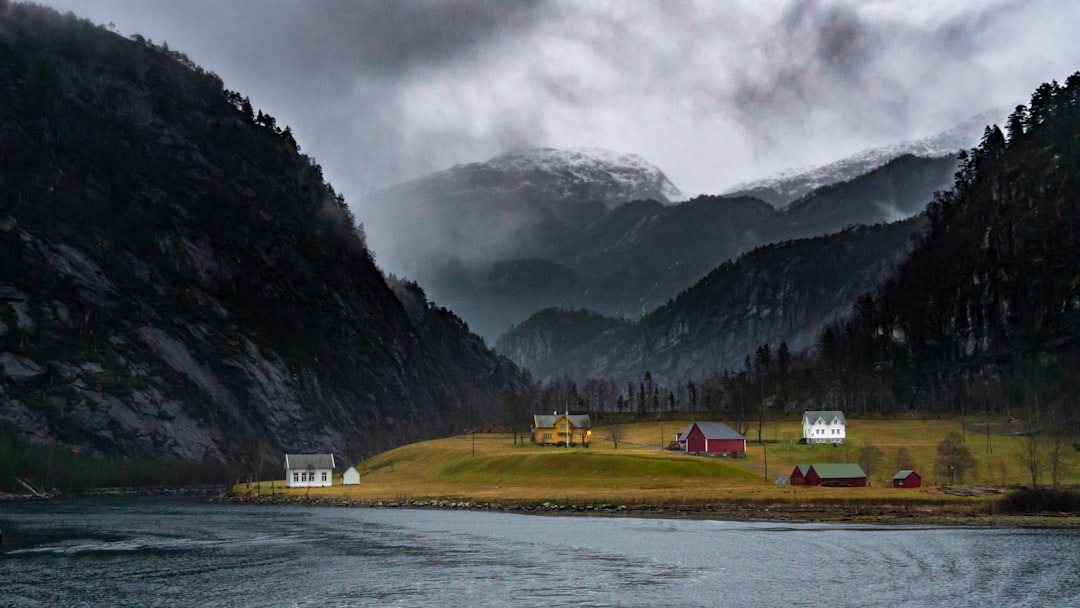Norway, with its breathtaking landscapes and diverse terrains, has become a haven for mountain biking enthusiasts. The allure of cycling through majestic fjords, dense forests, and rugged mountains is irresistible to both seasoned riders and newcomers alike. The country’s unique geography offers a plethora of trails that cater to various skill levels, making it an ideal destination for anyone looking to immerse themselves in nature while enjoying the thrill of mountain biking.
The combination of fresh air, stunning vistas, and the adrenaline rush of navigating challenging paths creates an experience that is both invigorating and deeply satisfying. Moreover, mountain biking in Norway is not just about the ride; it’s about connecting with the environment. The trails often wind through areas of outstanding natural beauty, allowing riders to witness the changing seasons and the rich biodiversity that Norway has to offer.
From the vibrant greens of summer to the crisp whites of winter, each ride presents a new opportunity to appreciate the country’s stunning landscapes. This connection to nature enhances the overall experience, making mountain biking not just a sport but a way to engage with the Norwegian wilderness in a profound and meaningful way. Book your 1-hour strategy session with Norway Relocation Group.
Summary
- The stunning natural landscapes and challenging terrain make mountain biking in Norway a thrilling and rewarding experience for enthusiasts.
- There are various types of mountain biking trails in Norway, including cross-country, downhill, and enduro, each offering unique challenges and experiences for riders.
- Beginners can start with gentle and scenic trails such as Rallarvegen, Hafjell Bike Park, and Trysil Bike Arena to build confidence and skills in a safe environment.
- Safety is paramount for newcomers, so it’s essential to wear protective gear, stay hydrated, be mindful of trail conditions, and ride within your abilities.
- Essential gear for mountain biking in Norway includes a sturdy bike, helmet, gloves, appropriate clothing, repair kit, first aid supplies, and navigation tools for remote trails.
Understanding the Different Types of Mountain Biking Trails
Mountain biking trails in Norway can be broadly categorised into several types, each offering a unique riding experience. Cross-country trails are among the most popular, characterised by their varied terrain and moderate elevation changes. These trails are typically longer and designed for endurance, making them perfect for those who enjoy a leisurely ride while taking in the scenery.
Riders can expect a mix of singletrack paths, dirt roads, and occasional technical sections that challenge their skills without being overly daunting. On the other hand, downhill trails are designed for those seeking an adrenaline rush. These trails often feature steep descents, jumps, and technical obstacles that require a higher level of skill and confidence.
They are usually shorter than cross-country trails but provide an exhilarating experience as riders navigate through challenging terrain at speed. Additionally, there are also all-mountain trails that combine elements of both cross-country and downhill riding, offering a balanced mix of climbing and descending. Understanding these different types of trails is crucial for riders to choose the right paths that match their skill level and riding style.
The Best Mountain Biking Trails for Beginners in Norway

For those new to mountain biking, Norway offers a variety of beginner-friendly trails that provide a safe and enjoyable introduction to the sport. One such trail is the Nordmarka Trail in Oslo, which features well-maintained paths that are relatively flat and easy to navigate. This trail allows beginners to build their confidence while enjoying the beautiful surroundings of the Nordmarka forest.
With its scenic views and gentle slopes, it’s an ideal starting point for those looking to explore mountain biking without feeling overwhelmed. Another excellent option for novice riders is the Rjukan Bike Park in Telemark. This park is specifically designed for beginners and features a range of easy trails that focus on skill development.
With its gentle gradients and clear signage, Rjukan Bike Park provides a supportive environment for newcomers to learn the basics of mountain biking while having fun. Additionally, many local bike shops offer guided tours and lessons in this area, ensuring that beginners have access to expert advice and support as they embark on their mountain biking journey.
Safety Tips for Newcomers on Mountain Biking Trails
Safety should always be a top priority for newcomers venturing onto mountain biking trails. One of the most important tips is to wear appropriate protective gear, including a helmet, gloves, and padded shorts. A well-fitted helmet can significantly reduce the risk of head injuries in case of falls or accidents.
Additionally, wearing gloves can improve grip on the handlebars while providing some cushioning against bumps along the trail. Another crucial aspect of safety is understanding one’s limits. Newcomers should start with easier trails and gradually progress to more challenging ones as their skills improve.
It’s also advisable to ride with a buddy or in groups, especially when exploring unfamiliar areas. This not only enhances safety but also makes the experience more enjoyable as riders can share tips and support each other along the way. Lastly, being aware of weather conditions is essential; wet or icy trails can be particularly hazardous, so it’s wise to check forecasts before heading out.
Essential Gear and Equipment for Mountain Biking in Norway
Having the right gear and equipment is vital for a successful mountain biking experience in Norway. A quality mountain bike suited for the terrain is paramount; it should be lightweight yet sturdy enough to handle rough paths. Full-suspension bikes are often recommended for beginners as they provide better shock absorption on uneven surfaces, enhancing comfort during rides.
In addition to the bike itself, essential accessories include a repair kit containing tools for fixing flat tyres or minor mechanical issues on the go. A hydration pack or water bottle is also crucial to stay hydrated during rides, especially on warmer days when exertion levels are high. Furthermore, appropriate clothing made from moisture-wicking materials can help regulate body temperature while providing comfort throughout the ride.
Investing in good-quality cycling shoes that offer grip and support can also make a significant difference in performance and safety.
How to Prepare Physically and Mentally for Mountain Biking

Preparing physically for mountain biking involves building strength and endurance through regular exercise. Activities such as cycling, running, or even swimming can enhance cardiovascular fitness, which is essential for tackling longer trails. Strength training focusing on core muscles, legs, and arms will also improve overall stability and control on the bike.
Incorporating flexibility exercises like yoga can help prevent injuries by increasing range of motion. Mentally preparing for mountain biking is equally important. Newcomers should familiarise themselves with basic riding techniques such as braking, cornering, and climbing before hitting the trails.
Visualising successful rides can boost confidence and reduce anxiety about potential challenges on the path ahead. Additionally, setting realistic goals for each ride can help maintain motivation while allowing riders to celebrate their progress over time.
Navigating Mountain Biking Trails: Tips for Newcomers
Navigating mountain biking trails can be daunting for newcomers; however, there are several strategies that can make this process easier. First and foremost, it’s essential to have a good map or GPS device that outlines the trail network. Many popular biking areas in Norway provide detailed maps at trailheads or online resources that can be downloaded beforehand.
When riding on trails, newcomers should pay attention to trail markers and signs that indicate difficulty levels or upcoming obstacles. It’s also wise to maintain a steady pace and avoid sudden movements that could lead to loss of control. Practising good bike handling skills on flat terrain before tackling more challenging sections can build confidence and improve overall navigation abilities.
Etiquette and Rules for Mountain Biking in Norway
Mountain biking etiquette is crucial for ensuring a positive experience for all trail users in Norway. Riders should always yield to pedestrians and hikers on shared paths; this simple act of courtesy fosters goodwill among different user groups. Additionally, it’s important to stay on designated trails to prevent damage to surrounding vegetation and wildlife habitats.
Another key aspect of trail etiquette is respecting other cyclists by maintaining a safe distance while riding. If approaching someone from behind, it’s courteous to announce your presence with a friendly “on your left” or similar phrase before passing them. Furthermore, riders should be mindful of their speed when navigating downhill sections or tight corners where visibility may be limited.
The Importance of Trail Conservation and Sustainability
As mountain biking continues to grow in popularity across Norway, it becomes increasingly important to prioritise trail conservation and sustainability efforts. Maintaining trails not only ensures their longevity but also protects the natural environment surrounding them. Riders can contribute by following Leave No Trace principles—this includes packing out any litter, staying on established paths, and avoiding creating new trails that could disrupt local ecosystems.
Sustainable practices also involve advocating for responsible land use policies that protect natural habitats while allowing for recreational activities like mountain biking. Engaging with local conservation groups or participating in trail maintenance days can help foster a sense of community among riders while promoting environmental stewardship.
Joining a Mountain Biking Community in Norway
Becoming part of a mountain biking community can greatly enhance one’s experience in Norway. Local clubs often organise group rides, events, and workshops that provide opportunities for riders to connect with others who share their passion for cycling. These communities can offer invaluable support for newcomers by providing guidance on local trails, sharing tips on bike maintenance, and fostering friendships among fellow enthusiasts.
Additionally, joining a community allows riders to stay informed about upcoming events such as races or festivals celebrating mountain biking culture in Norway. Many clubs also advocate for trail access and conservation efforts within their regions, giving members a chance to contribute positively to their local environments while enjoying their favourite sport.
Resources for Finding and Exploring Mountain Biking Trails in Norway
For those eager to explore Norway’s extensive network of mountain biking trails, numerous resources are available to assist in planning adventures. Websites such as Visit Norway provide comprehensive information about popular biking destinations across the country along with detailed maps highlighting various trail options. Mobile applications like Trailforks offer user-generated content featuring trail maps, reviews, and photos from fellow riders—making it easier than ever to discover new routes tailored to individual preferences.
Local bike shops often have valuable insights into nearby trails as well; staff members are typically passionate about cycling themselves and can recommend hidden gems off the beaten path. In conclusion, Norway stands out as an exceptional destination for mountain biking enthusiasts at all levels due to its stunning landscapes and diverse trail options. For those looking to immerse themselves further into Norwegian culture while honing their language skills, consider enrolling in Norwegian courses at the NLS Norwegian Language School in Oslo.
These courses not only provide an opportunity to learn the language but also allow participants to engage with local communities more effectively—enhancing their overall experience while exploring Norway’s breathtaking mountain biking trails.
Speak Norwegian with confidence. Enroll in a class at the NLS Norwegian Language School now.

